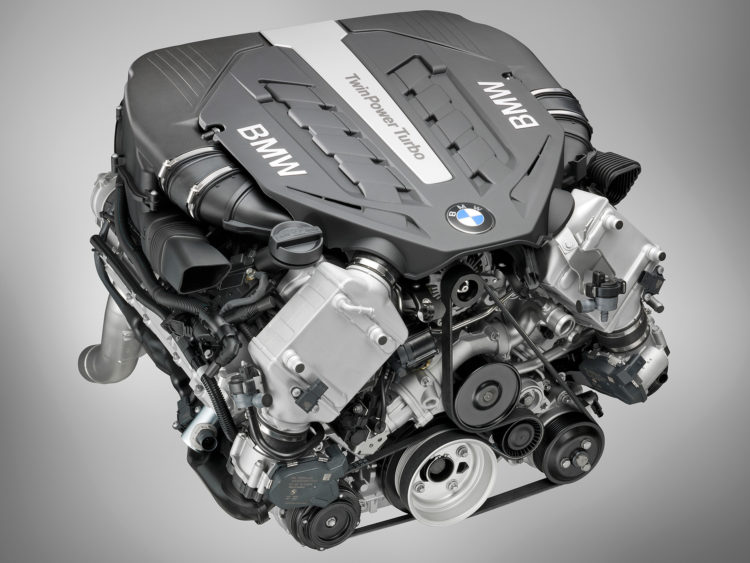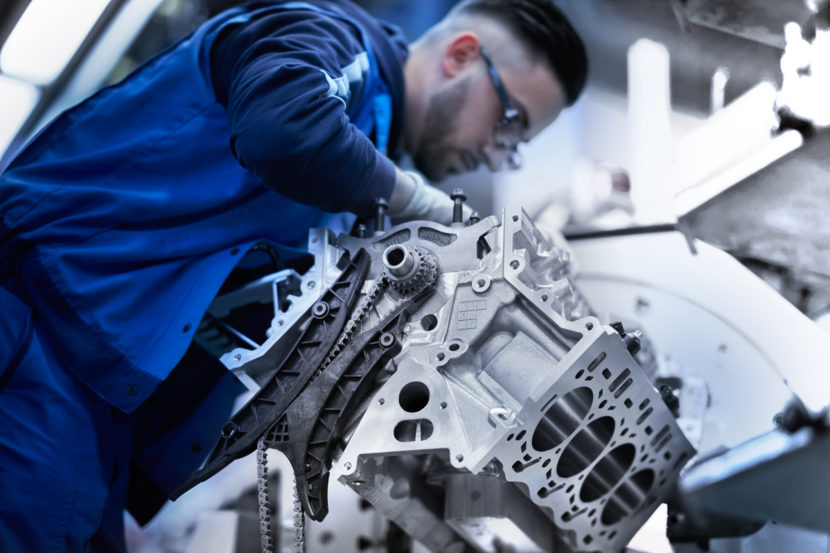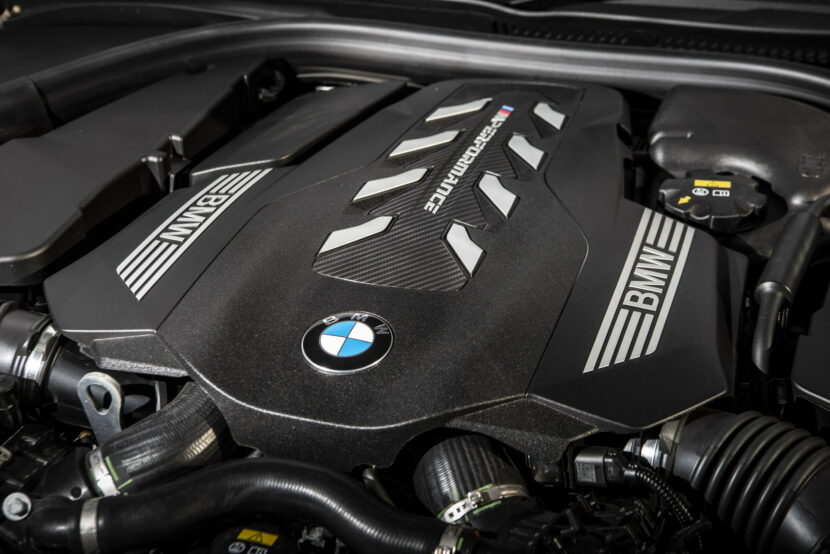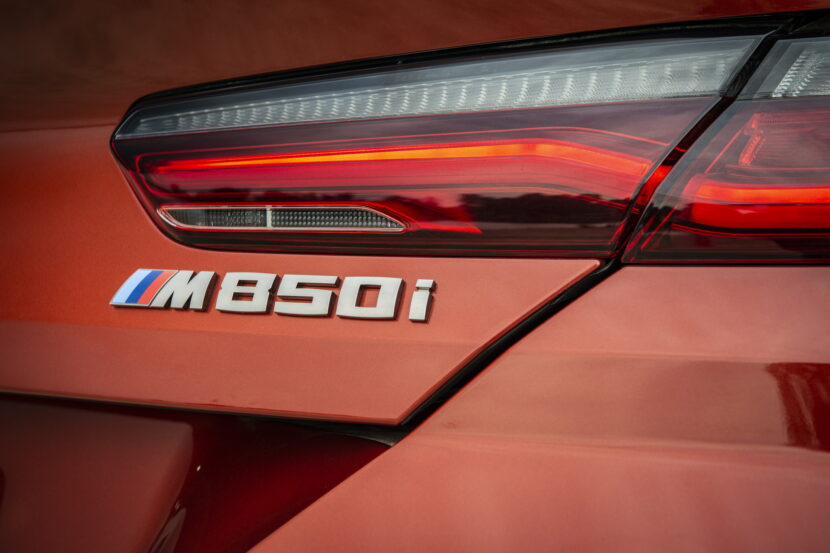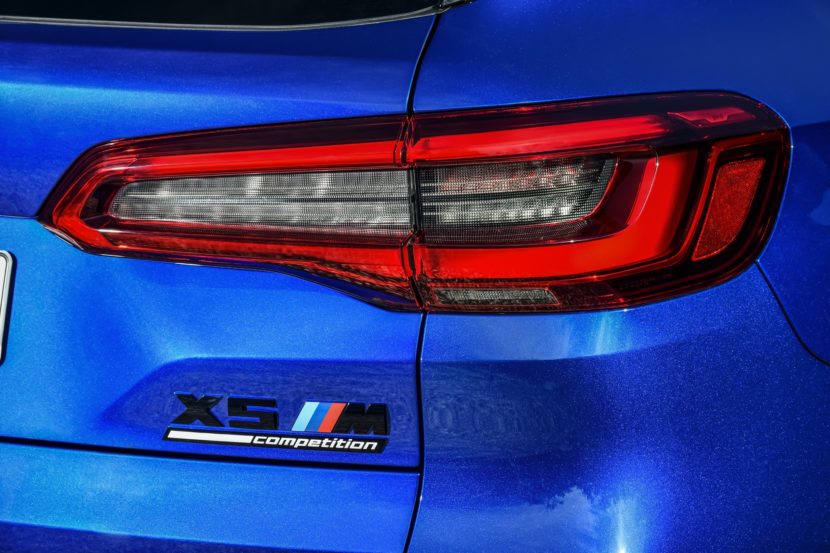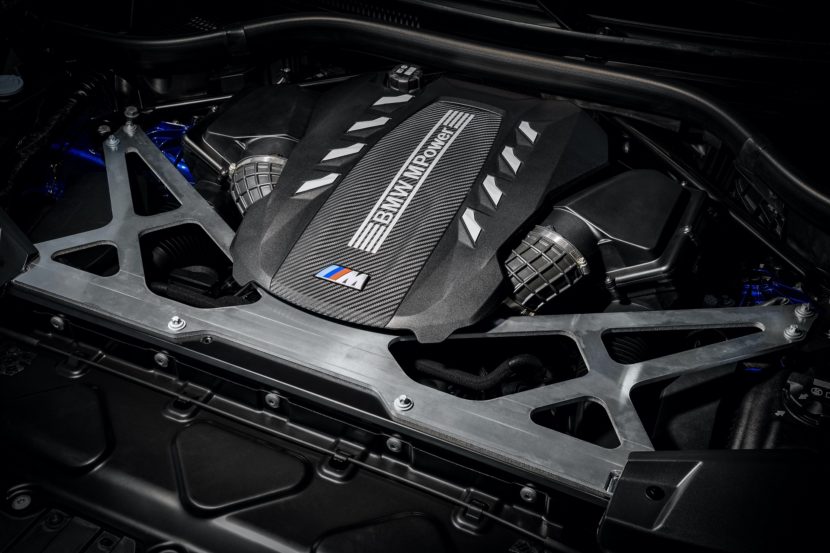BMW is synonymous with exquisite power, so 8-cylinder units are nonetheless part of the brand culture, with the Bavarians having a long tradition of developing trailblazing V8 engines. Today, we’re taking a look at the current V8 engines in the BMW portfolio.
The Engine Codename Guide
Basically, at the moment, BMW relies on a single, core V8 family: the N63 which was launched back in 2008 and was subjected to several technical updates over the course of years. Of course, the BMW M GmbH division makes use of specially-modified engines, derived from the N63: the S63 units. Last, but not least, BMW also developed a racing version of the N63, that’s currently in use in the current M8 GTE endurance contender: the P63.
ALPINA also uses the N63 V8 engines, but adds a touch of personality with specifically tweaks carried out by the engineers from Buchloe. The current powerplant variant relies on the latest N63B44T3 iteration, with no specific “Mx” code to signal the new ALPINA V8 unit (compared to the previous M1, M1/1, M2, M2/1, M2/2 and M5 versions).
As you might have already noticed, the designations are quite simple: N63 – S63 – P63. All three engine share the same roots (“63”), with the prefix letter signaling the differences:
- “N” stands for “New Generation” (“Neue” in German, 2006 to 2016)
- “S” likely stands for “Sport” and is used solely on BMW M models
- “P” could actually mean “Performance” and is exclusively reserved for the BMW Motorsport division
- the “B” denotes the fuel type (“Benzine” in German, which means gasoline)
- the “44” number signals the engine displacement of 4.4 liters
- the “T” denotes the technical updates, followed by a subsequent incremental digit (“0”, “1”,”2″,”3″ etc.)
The “6” in the root particle denotes the 8-cylinder architecture (vs.”7″ standing for 12-cylinder, for example), whereas the “3” is technical design code highlighting the presence of turbocharging and direct injection. However, the rule is not obeyed in the case of the one-and-only S85 V10 unit, where “8” illogically signals a 10-cylinder architecture.
In terms of generations, the core N63 engine family premiered is a direct successor to the preceding N62 V8s. As a matter of fact, the N63 is a forerunner in many aspects: the first V8 engine in the industry to use a hot-vee layout and the first BMW V8 unit to use turbocharging and direct injection.
Key technical details of the N63 V8 engine family
From the very beginning, the new N63 BMW V8 engines were presented as revolutionary powerplant concepts, owing to the fact they were the first V8 units in the automotive world to feature a hot-vee layout.
The hot-vee configuration (sometimes called “hot inner V”) is related to the outstanding thermal energy developed by the engine (“hot”) and the ingenious placement of the turbochargers and exhaust manifolds in the V angle between the cylinder banks.
This type of layout pioneered by BMW has the net advantages of reducing the width of the engine, compared to the traditional configuration with the intake manifold inside the “V” and the exhaust manifold outside the angle.
Furthermore, with the exhaust manifold and turbocharging unit placed between the cylinders, the advantage is that the distance between the exhaust valves and the turbochargers reduces significantly. The shorter the length, the more effective and faster the turbocharger goes into action.
Most importantly, the hot-vee layout helps to substantially reduce the turbo lag and acceleration response. For acoustic reasons, the turbochargers of the N63 engine generation use diverter valves instead of blow-off valves.
Nonetheless, the throttle response is also further improved in the N63 thanks to the installation of air-to-water intercoolers. The principle is simple and is based on the following repetitive cycle: the heat from the engine (in the form of gas or “air”) is exchanged and transferred in the “water” circuit, with new, cooler air being fed into the engine in the end.
Related: Best BMW Engines Of All-Time
Of course, the N63 engines came equipped with the Double VANOS variable valve timing system from the beginning, but early variants did not feature the state-of-the-art VALVETRONIC variable valve lift system.
The cylinder block and head are manufactured of aluminum-silicon alloy or Alusil, as it is called. There are 4 valves per each cylinder, so 32 in total, with a dual overhead camshaft configuration or DOHC.
The 4,395 cc (4.4 liters) was the standard displacement of the N63 engines, but in China a modified version dubbed N63B40A was sold from 2012 to 2017. The displacement was reduced to 3,982 cc (4.0 liters) due to the shorter stroke length of the engine (80 mm instead of the standard 89 mm).
The first version, the N63B44O0, developed 300 kW / 408 PS (402 hp) and 600 Nm (443 lb-ft and was sold between 2008 and 2013.
Technical updates of the N63 engine family
The N63 engines have been on the market since 2008, so across time they received some important upgrades to make them more powerful and efficient. The first update came in 2012. The new N63B44O1 generation benefitted from the installation of:
- VALVETRONIC,
- revised turbochargers,
- lighter pistons,
- forged connecting rods and crankshaft
- a revised fuel system
- an additional coolant pump
- new valve stem seals
- a new valve cover labyrinth oil catch/return system
The peak output increased to 331 kW / 450 PS (444 hp), with the maximum torque now achieving 650 Nm (479 lb-ft). The N63B44O1 equipped models produced between 2013 and 2016.
The second technical update of the N63 engine, known as the N63B44O2, came in 2016. Upgrades included the following:
- twin-scroll turbochargers
- the oil/coolant heat exchanger moved inside the “V”
- a revised, wider powerband
Output and torque figures remained the same as in the case of the O1 update from 2012.
The most recent TU (technical update) of the N63 came in 2018. Not one, but two different versions were released: the N63B44M3 and the newer N63B44T3. The M3 version came with 340 kW / 462 PS (456 hp), a new ignition system and an improved thermal insulation for the crankcase and cylinder head.
In addition, the more powerful N63B44T3 boasts 390 kW / 530 PS (523 hp), higher pressure injectors (5,000 psi), larger twin-scroll turbochargers, a redesigned intake manifold and an upstream cooling radiator. In Europe, the T3 version is compliant with the stricter emission regulations and thus replaced the M3 variant of the N63 engine.
The N63B44M3 was briefly used between 2018 and 2019 in the following models:
- the pre-LCI G30 M550i xDrive Sedan
- the US-only G05 X5 xDrive50i
- the US-only G07 X7 xDrive50i
Currently, the standard V8 engine used across the high-end BMW family of models is the recent N63B44T3, which powers the following models:
- G14/G15/G16 M850i models (Convertible/Coupe/Gran Coupe)
- G05 X5 M50i
- G06 X6 M50i
- G07 X7 M50i
- G11/G12 LCI 750i/750Li models
- G30 LCI M550i xDrive Sedan
The S63 V8 units: N63 spiced up by BMW
The V8 powerplant underpinning the range-topping BMW M models have been specifically enhanced starting from the standard N63 engines. The latest iteration, the S63B44T4 with 441 kW / 600 PS (592 hp) that was premiered in 2017 in the pre-LCI F90 M5 model, comes with significant upgrades over the non-M N63 powerplant.
The most important modifications include:
- two twin-scroll turbochargers
- a different, high-performance piston design
- enhanced cooling
- pulse tuned, cross-engine exhaust manifold
- a half-shell intake manifold, similar to the one used on the N63B44O2 generation
With the addition of the Competition models, the S63B44T5 was also released beginning with 2018, which adds extra power to achieve a peak output of 460 kW / 625 PS (617 hp). Both the T4 and T5 versions of the S63 engine boast a maximum torque of 750 Nm (553 lb-ft).
So, compared to the standard V8 which is offered in a single power stage, the S63 8-cylinder unit is jointly offered in the two output versions as revealed, underpinning the following BMW M high-performance models:
- F90 M5 and M5 Competition
- F91/F92/F93 M8 and M8 Competition models (Convertible/Coupe/Gran Coupe)
- F95 X5 M and X5 M Competition
- F96 X6 M and X6 M Competition
As an interesting fact, the defunct German custom vehicle manufacturer Wiesmann used BMW V8 engines. From 2011 to 2014, the Wiesmann GT MF4 convertible was powered by the 300 kW N63B44O0 engine, while the GT MF5 coupe model used the 408 kW S63B44O0 unit.
As a conclusion, in addition to this useful BMW V8 guide, you can also consult our article on the BMW engine codes naming convention.



